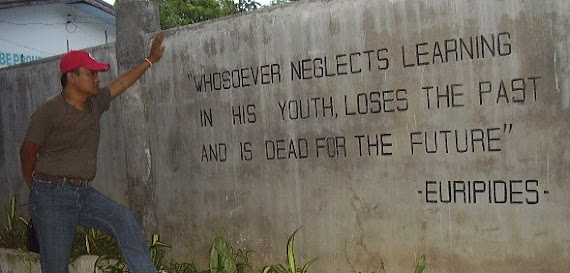The LGU funding expansion brought about by the so-called “Mandanas Ruling” to start in 2022 is either a curse or a cure. It would be a cure if we will vote local chief executives who are knowledgeable in local governance and with utmost competence in fiscal and resource management and curse if we happen to elect the contrary. The LGUs, both the provincial and the municipal, can acquire more money because of such a ruling of the Supreme Court (SC). This means additional responsibilities to whoever wins in the forthcoming local elections. There is more money now to the LGUs than the national government that is why some congressmen though they are yet to complete their terms, they slid down to governorship for the next elections.
The Mandanas issue and the devolution of functions to the LGU, next to the responses on economic recovery and the road to new normal and in curbing the raging pandemic, among others, is a very crucial question to ask aspirants to LCE positions, namely, mayors and governors.
Looking back, the SC in 2018 granted and reaffirmed in 2019 the petitions of Batangas Gov. Hermilando “Dodo” Mandanas and former Bataan Gov. Enrique “Tet” Garcia Jr., under which LGUs’ IRA (Internal Revenue Allotment) would come from 40 percent of collections of all national taxes—the Bureau of Internal Revenue’s (BIR) tax take plus the Bureau of Custom’s (BOC) collections of import duties and other taxes. At present, LGU’s IRA only came from two-fifths of national internal revenue taxes collected by the BIR. In response, the National Government has decided to reduce its workforce by devolving many functions formerly carried out by its agencies down to the level of the LGU. From now on, the IRA will be known as National Tax Allotments or NaTA.
President Rodrigo R. Duterte signed Executive Order No. 138 to set the timetable for the devolution, which is to be completed by 2024.
Depending on the quality of governance, the years 2022 onwards to 2024 are a delicate balance of economic growth and the delivery of basic social services. Our choice of mayor or governor, or elected officials in general, must know that there is a need for better oversight not only on the use of local fiscal resources but human resources as well.
In November 2019, Vice-Mayor Walter B. Marquez of Sablayan, having accurately followed the updates on the Mandanas-Garcia petition, authored Resolution No. 2019-II-SDM130 appreciating Gov. Mandanas for “leading the fight until victory the LGU shares in the form of IRA … “ saying that Sablayan and its barangays would benefit from it.
With the ruling in full swing, the DBM estimates showed that first-class municipalities such as Sablayan would have an increase of about P187.62 million to P1.01 billion. As the bigger IRA would carve a bigger chunk from the record P5.02-trillion national budget proposal for 2022, the Department of Budget and Management (DBM) said the functions to be devolved “must permanently be taken out from national agencies to empower LGUs to assume them.” Then-mayor Eduardo B. Gadiano and then Councilor Marquez likewise keep themselves abreast on the developments of the Mandanas-Garcia petition. With a push coming from Gadiano, Marquez dipped his fingers on the issue by crafting, as early as 2017, a legislative act authorizing the Philippine Regional Investment Corporation or PRIME to meet, study and discuss matters on the petition in various venues and halls on behalf of the Municipality of Sablayan free of charge. Under Gadiano’s watch in Sablayan as mayor, the partnership between Mandanas and the municipality on such a petition came into fruition.
What we need are local chief executives, at the municipal and provincial levels, or a set of elected officials for that matter, that would not neglect local revenue collection despite this. With this sudden increase in their allocation in the national revenues, the soon-to-be elected LGU officials, should not be negligent in local income generation. Marquez pointed out that the most important things as ever for voters and citizens are as follows: the improvement of citizens' participation in the budgeting process, the boosting of transparency and accountability, the civic monitoring of transfer and utilization of funds, and the monitoring of provision of social services in every barangay.
It appears that devolution, as sure as I am writing this, is already in the bucket. But I tell you, as we battle the pandemic in the next few years, we will also be facing a massive layoff of national government employees from all over the land.
The proposed establishment of new hospitals, for instance, would also fall under the aegis of the LGUs for health services is also fully devolved as per the EO of President Duterte. Chances are, the highly publicized establishment of a nationally-funded general hospital in the province with this development would pass into the eye of the needle, to say the least.
Also, this would not resolve the problem of the highly fragmented government system in the country and the LGUs perennial problem of neglecting its revenue-raising power.
In the hands of unscrupulous, traditional, overstaying, and inept or ham-fisted politicians, this development is a bane than a boon. So, the ball is in our hands come May 2022.
Since election season is fast approaching, our questions to aspirants and soon-to-be candidates should center on more significant issues such as their responses to the future effects of the Mandanas ruling than fandom-fanned and senseless queries, or gossips, surveys, and mudslingings under the guise of political analyses.
------
(Photo: Jasper Francisco)







